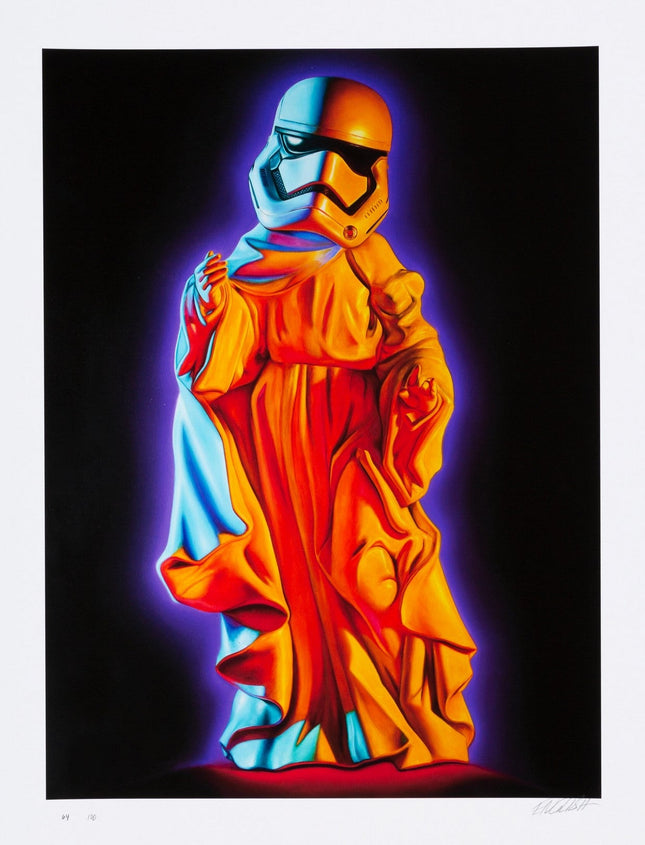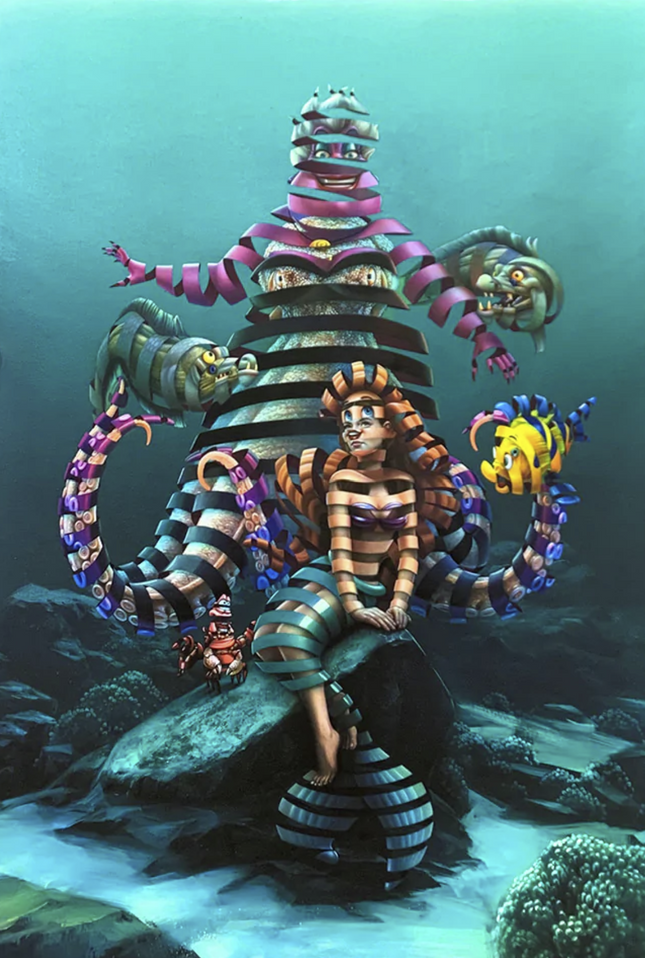
Villain

Ron English Stormtrooper Messiah Archival Print by Ron English
Stormtrooper Messiah Limited Edition Archival Pigment Fine Art Prints on Moab Entrada Fine Art Paper by Graffiti Street Art and Pop Culture Artist Ron English. 2021 Signed & Numbered Limited Edition of 100 Archival Pigment Print in Colors on Moab Entrada Fine Art Paper Artwork Size 17x22 The "Stormtrooper Messiah" is a limited edition work of art by the critically acclaimed artist Ron English, known for his provocative blend of street art and pop culture iconography. This particular piece is one of a series of 100 archival pigment prints, each signed and numbered to assure its collectability and authenticity. The artwork measures 17x22 inches and is rendered on Moab Entrada Fine Art Paper, a choice that denotes high quality and ensures the longevity and vibrancy of the colors used in the print. This piece by English is a powerful commentary on the intersections of ideology, iconography, and the indoctrination mechanisms within our society. It reimagines a standard stormtrooper - a symbol of the faceless enforcer from the "Star Wars" franchise - in the garb of a religious icon, precisely resembling the Messiah. This fusion of imagery from distant corners of culture spotlights the often unexamined devotion we have to certain facets of pop culture, paralleling religious fervor. English’s choice of a stormtrooper, an emblem of collective identity and unyielding authority, enveloped in the trappings of a spiritual figure, questions the role of such figures and the institutions behind them in shaping beliefs and behaviors. The artist employs luminous and contrasting colors to breathe a sense of reverence into the figure, an approach that reflects the aura often associated with religious artworks. The flowing robes in vivid hues give the subject a sense of motion and ethereal presence, intensifying the impact of the visual juxtaposition. The "Stormtrooper Messiah" is more than a piece of fine art; it's a visual discourse that challenges the viewers to reflect on the narratives and symbols that influence their understanding of power, culture, and spirituality. Ron English, through his distinctive merger of street art's grit and pop art's fascination with the mainstream, has created an arresting image that continues to spark conversations in the art community and beyond.
$394.00

Super A Submerged Archival Print by Super A
Submerged Archival Print by Super A Archival Pigment Fine Art Limited Edition Print on 300gsm Archival Cotton Rag Paper Pop Artist Modern Artwork. 2022 Signed & Numbered Limited Edition of 90 Artwork Size 17x24 Hand Deckled
$356.00



